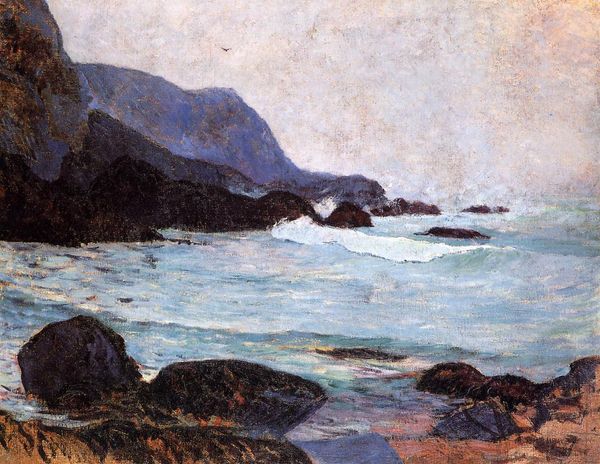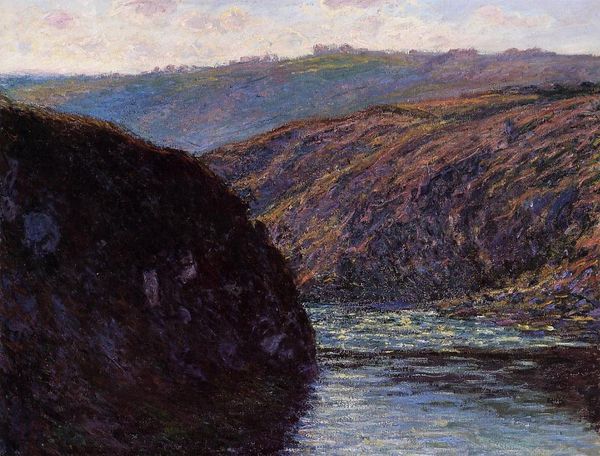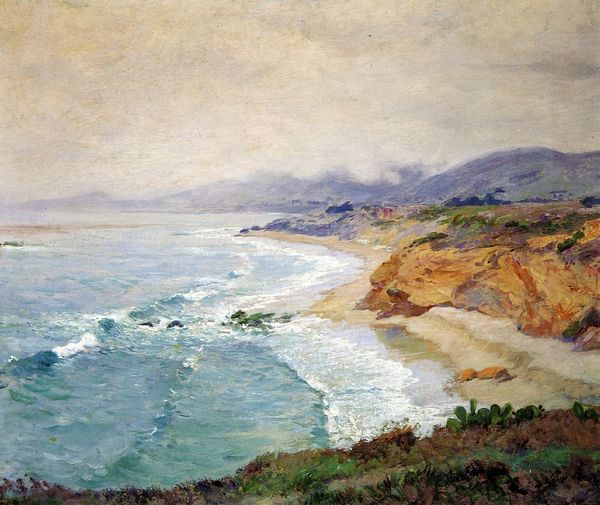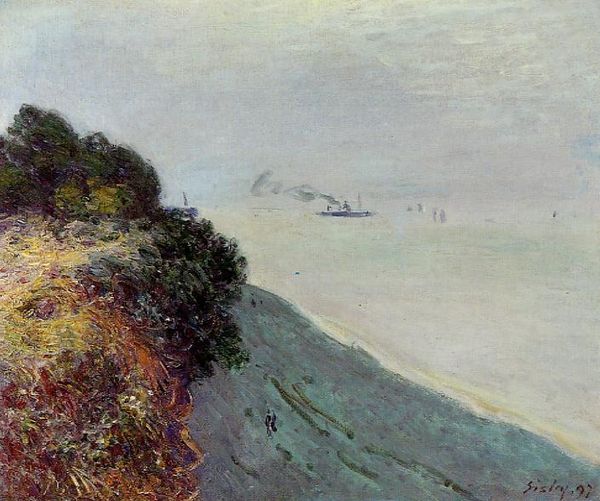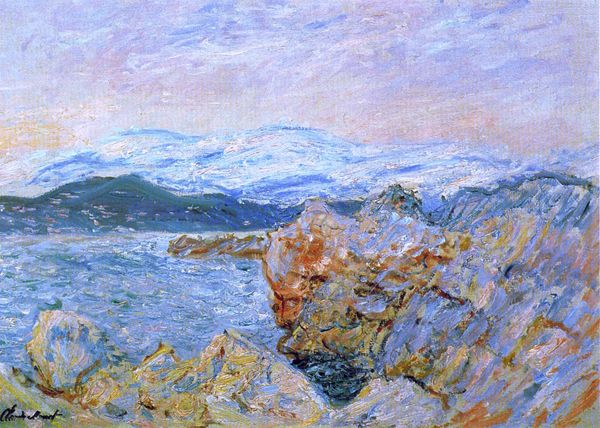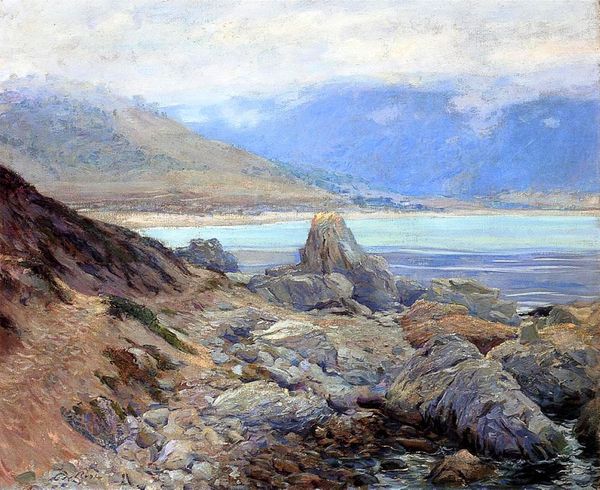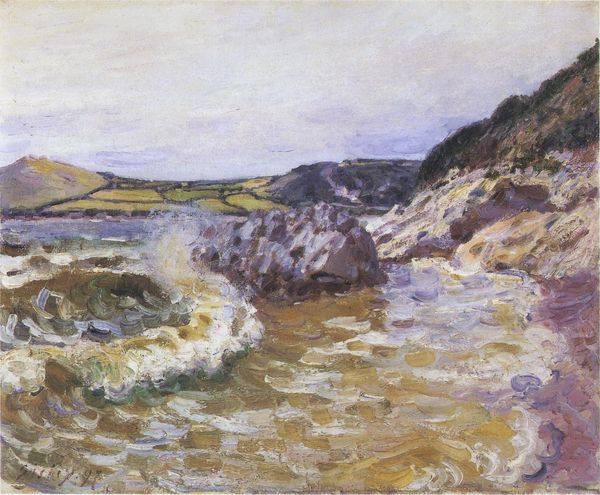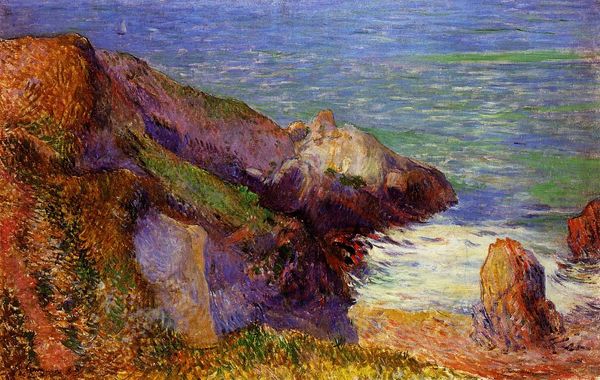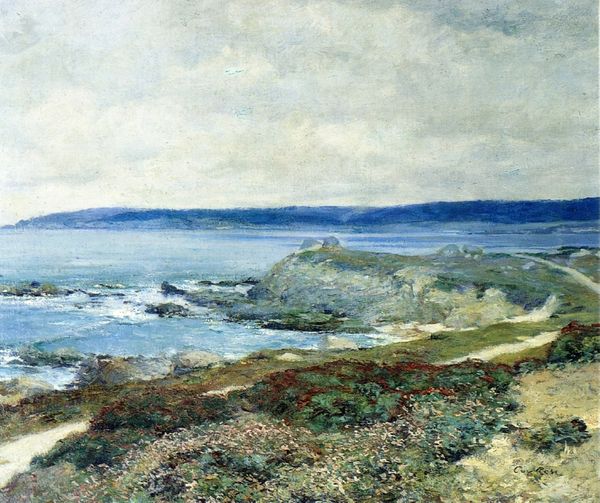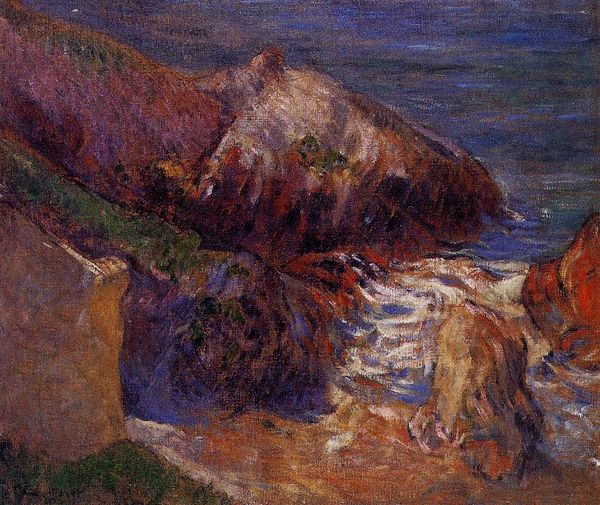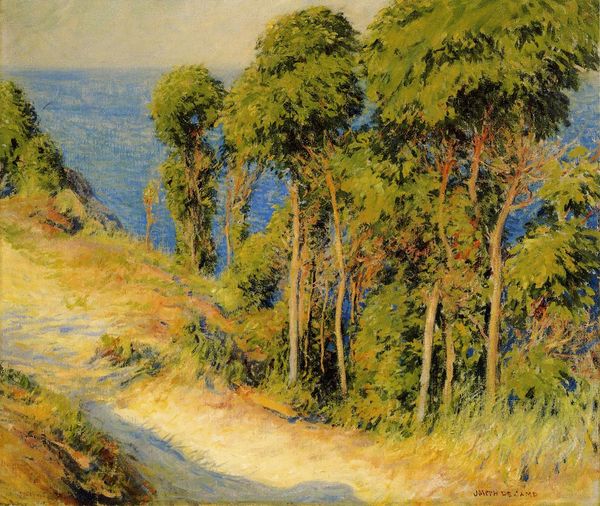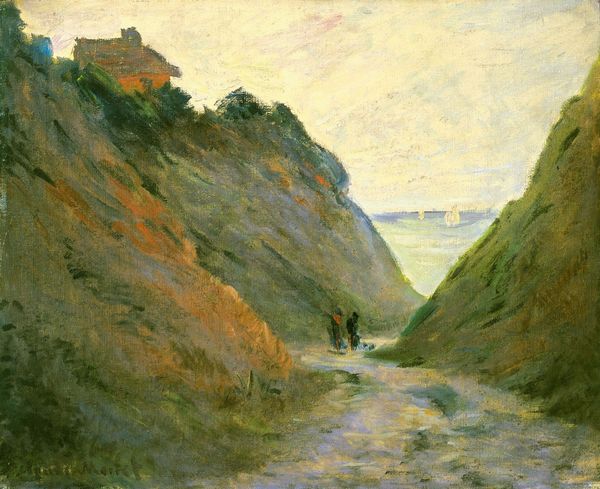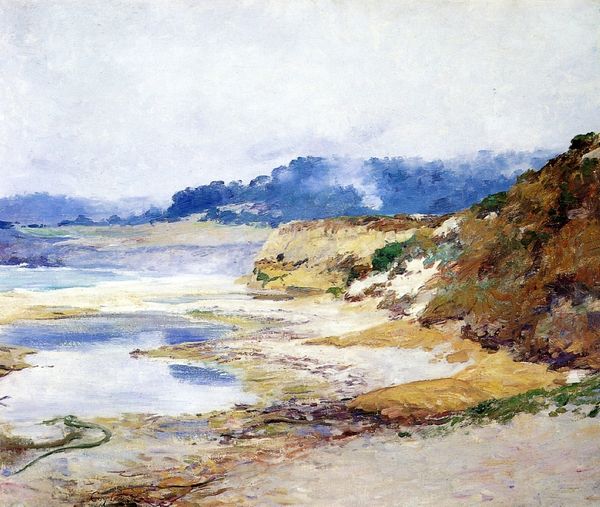
Copyright: Public domain
Curator: This is "Ecola Beach, Oregon," an oil painting by Childe Hassam, completed in 1904. What are your first impressions? Editor: Immediate sensation: brisk. That almost metallic light you get on a cold, blustery beach day. It’s visually chilly, but…inviting, too? Like a dare. Curator: It certainly evokes that sensation, doesn't it? Hassam was a master of Impressionism, and here you really see him capturing the light and atmosphere of the Oregon coast. The composition also feels significant. Editor: In what way? It feels kind of casually observed…is that the intention? Curator: Note how the painting divides itself: rugged, dark greens and browns dominating the landmass to the left, versus the muted blues and whites of the ocean on the right. Even the sky mirrors this dichotomy with its contrasting shades. The rocky land sort of *pushes* the eye toward the sea, framing it, while the lighter tints on the other side open into a sense of expanse. The contrast generates both harmony and tension; I mean, the rocks stay put, but the sea, ah, the sea has been imbued in symbolic language across cultures for ages: the subconscious, the untamed. Editor: I love how he used these staccato brushstrokes – flicks of pure color, right? Almost vibrates, and you can feel the wind, and even taste the salty spray on your face. It's wild and so real. Not polished, but profoundly felt. Hassam felt this, and now I do, too. Curator: Precisely, and even the title grounds the art in time, in a moment. What we witness here on this canvas happened at a certain date and specific site along the Pacific, as if documenting a brief communion with the raw power of the natural world. This painting really encapsulates something timeless about the way humans connect with a landscape. Editor: Timeless…yet intensely personal. Like a stolen glance preserved forever. I might have to track down this exact view, stand where Hassam stood, just to say "thanks" to a fellow wanderer who translated experience into beauty. Curator: Indeed, that’s the ongoing dialogue artwork starts, isn't it? Visual encounters and the transmission of sentiments continue as others encounter the canvas years after it was completed.
Comments
No comments
Be the first to comment and join the conversation on the ultimate creative platform.
